It is difficult to decide which martial art to dedicate yourself to, especially when they share similar techniques. Brazilian Jiu-Jitsu(BJJ) and Judo are very closely related through their Japanese Jujutsu origins, giving them several similarities. However, there are also a number of key differences that distinguish the two as separate martial arts. This article will discuss these key differences and similarities.
Both BJJ and Judo use a Gi, have similar techniques and were created for anyone of any size or fitness level. However, BJJ matches have a time limit and favor ground-fighting over standing due to a different point system. Judo is also more fast-paced and regulated and has a different belt system.
I will explain these similarities and differences in more detail below. I have also included which is more effective in real-life situations.
What are the Key Differences between BJJ vs Judo?
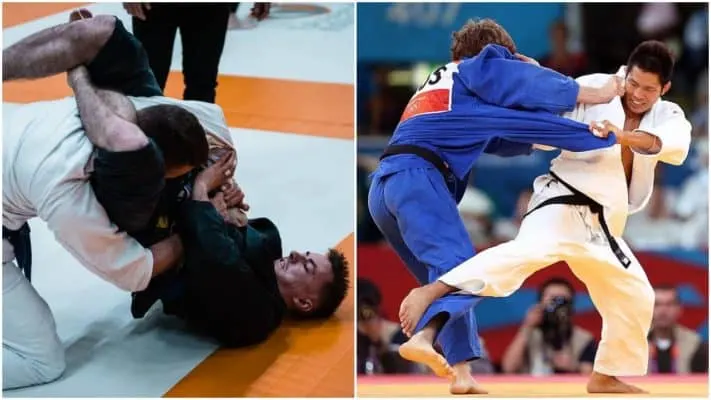
BJJ and Judo are derived from a similar background. However, there are surprisingly quite a few differences when you look closely at the two martial arts. One of these differences is that Judo is recognized as an Olympic sport, whereas BJJ is not an Olympic sport. There are more key differences below.
Point System
In Judo, a match is won when you receive one full point, known as ‘ippon’. This can be received instantly by throwing your opponent onto their back, submitting them with a choke or arm-lock, or pinning them down for 20 seconds.
Half points are known as ‘waza-ari’. Two of these will result in winning the match, including throwing your opponent partly on their back or pinning them down for more than 10 seconds.
Opponent penalties can also allow you to win a match. Receiving three minor penalties (‘shido’), or one major penalty (‘hansoku-make’), results in automatic defeat.
A BJJ match is won by submitting your opponent through chokes or joint-locks, or by accumulating the most points. Points in a BJJ match are unlimited and awarded when gaining positions of power. All of these positions are ground-based.
For this reason, BJJ practitioners will quickly take the fight to the ground, whereas Judo practitioners prefer to stay standing. The Judo points system encourages practitioners to fight on their feet, so that they are able to throw their opponent and win.
Time Limits and Pace
There is also no time limit in a Judo match. Practitioners are expected to keep the pace going and the referee will reset the competitor’s position if they feel the match is not progressing. Any form of stalling will incur one Shido.
In BJJ, matches have a time limit because BJJ competitors are able to stall. This will prevent submission as they accumulate more points. Once the timer runs out, the person with the most points wins. BJJ matches are typically 5-10 minutes long, unless someone submits to a choke or joint lock.
Technique Limitations
Judo is a much more restricted sport than BJJ. There are many techniques that can be used in BJJ that would incur penalties in Judo, such as holding your opponent’s wrist, using two hands to break a grip or performing a joint lock on any joint other than the elbow.
In BJJ, practitioners can use Judo techniques without penalty. Any Judo throw is considered a takedown, provided it results in a dominant position. However, passing guard, back control, back mount and mount are all worth more points than any takedown.
Gi Specifications and No-Gi
The Judogi is more regulated than the BJJ Gi. A ‘sokuteiki’ is used to measure the Gi, ensuring all competitors have the same grip opportunities. This makes the competition fair, considering Judo throws rely heavily on Gi grips.
The BJJ Gi still has standard specifications that must be met. However, because BJJ techniques do not rely as much on using your Gi, these specifications are more lenient. This results in more variation in the Gis worn by BJJ competitors. The BJJ Gi is generally tighter, has a shorter jacket and is not as thick as the Judogi. Judo requires more durable material because Judo techniques put much more strain on the Gi.
In addition to this, BJJ also offers a no-Gi competition. This usually involves competitors wearing a rashguard or other tight-fitting clothing so that the techniques used do not rely on wearing a particular uniform.
The Belt System
The BJJ belt system can be seen as a simplified version of the Judo belt system. It was derived from Judo, but instead of having 5-6 belts before black belt, BJJ practitioners only have four. Judo also uses the traditional terms ‘Kyu’ and ‘Dan’ for their belts.
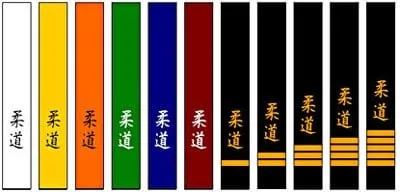
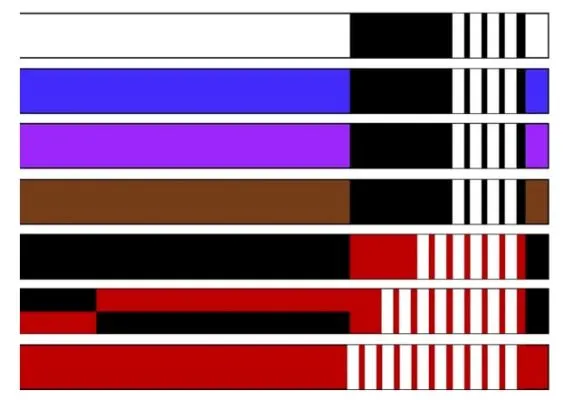
There is also only one step between each Judo belt, whereas there are four ‘stripes’ to acquire for each BJJ belt. This means it generally takes longer to progress to another belt in BJJ. On average, it takes around 10 years to reach a black belt in BJJ, whereas it can take 4-6 years in Judo.
RECOMMENDED FOR YOU: What’s the Difference Between Gracie Jiu-Jitsu and BJJ?
What are the Core Similarities between BJJ vs Judo?
Judo and BJJ are both considered ‘gentle’, with Judo translating to ‘gentle way’ and Jujutsu meaning ‘gentle art’. Although there are techniques such as throws and chokes, these are done in a way that prevents serious injury to the opponent. The key similarities of these gentle martial arts are listed below.
The Use of a Gi
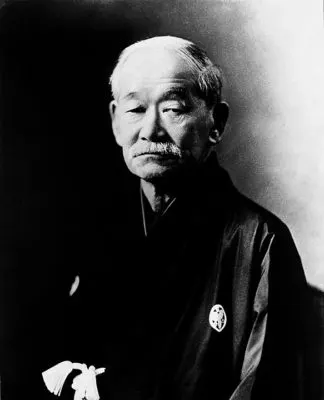
Although there may be differences in the Gi specifications, both Judo and BJJ use the traditional Gi. The Gi was designed by Jigoro Kano, the founder of Judo, to suit the needs of his students. This design was then used and adapted in BJJ, which was born out of Judo and Japanese Jujutsu.
Designed for All
The original purpose of both BJJ and Judo is very similar. Jigoro Kano, the creator of Judo, originally adapted techniques he learned from Japanese Jujutsu so that smaller, weaker individuals could learn to defend themselves. He wanted individuals to be able to use the techniques without relying on their strength or size. Being a smaller man, he developed the techniques to use an opponent’s strength and momentum against them.
In a similar way, Helio Gracie adapted techniques from Judo and Japanese Jujutsu to create BJJ. Helio Gracie was even weaker than Jigoro Kano, being unable to climb a flight of stairs without becoming breathless. Therefore, he needed techniques that anyone can perform, regardless of their strength, size or fitness level.
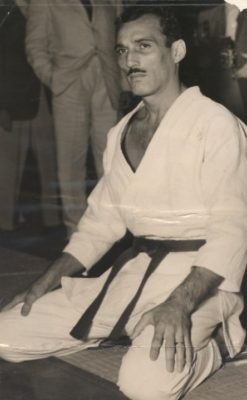
Similar Techniques
Being derived from the same Japanese martial art, Japanese Jujutsu, Judo and BJJ share many common techniques. I mentioned earlier that there are techniques used in BJJ that are not permitted in Judo. However, the techniques that are permitted are essentially the same.
For example, the techniques used to lock an opponent’s elbow involve immobilizing the body while stretching or twisting the arm beyond its natural capability. Chokes and ground fighting techniques are also similar.
RECOMMENDED FOR YOU: BJJ vs Japanese Jiu-Jitsu – Key Differences and Similarities
Which One is More Effective in Self Defense?
Both Judo and BJJ complement one another. BJJ provides you with a broader range of ground-fighting techniques, whereas Judo provides you with a wider skill set in fighting on your feet. This is why many practitioners will choose to learn both martial arts.
However, when it comes to self-defense, BJJ offers a more practical skillset. Statistically, as much as 73% of street fights will end on the ground, as shown in this study. Most attackers will try to knock or pin their victim to the ground so they cannot escape or strike.
BJJ takes that advantage away from your attacker, making you the more skilled fighter when on the ground. However, if the fight remains standing, Judo can be more effective at taking down your opponent.
Another thing to consider is that Judo techniques are designed to use with a Gi. Although some attackers may be wearing clothes that can be gripped, this will not always be the case. Therefore, even some Judo techniques might be ineffective in a real self-defense situation.
Why is BJJ More Popular than Judo?
BJJ appears to be more popular than Judo due to more exposure. BJJ is practiced by many high-profile fighters in MMA and the UFC and therefore receives more social media coverage than Judo.
BJJ was also originally introduced to the world on a global platform by Royce Gracie when the UFC began. Judo, on the other hand, was only passed on through traveling Judo masters. Although this still helped the spread of Judo, it was not as popular as BJJ.
There are also many more opportunities to study BJJ. Online instructional videos and books make it more accessible to the public if it is not offered at your local gym. Free podcasts and YouTube videos are also very informative.
RECOMMENDED FOR YOU: What is Gracie Jiu-Jitsu? Fully Explained
Is Judo Hard on the Body?
Judo is a full-contact sport and is therefore hard on the body. Although the rules of Judo are in place to protect practitioners from injury, it is still very common to receive bruises, muscle strains and sprains. The most common mechanism of injury is being thrown by your opponent.
Knee injuries are most common in Judo because they are under strain with every quick change in direction. Shoulders and fingers are also commonly sprained, dislocated or broken from being thrown down by the arm. Overall, research from the 2008 and 2012 Olympic Games suggests an injury rate of about 11-12% in Judo (link here).
Can Judo Beat BJJ?
Judo has proven effective against BJJ in the past, such as in the 1951 fight between Masahiko Kimura and Helio Gracie. After two rounds, Kimura was able to throw and pin Gracie to the ground, take his arm and break it before Gracie’s teammates officially threw in the towel.
The theory behind why Judo can beat BJJ is that Judo is a more diverse martial art, teaching both stand-up fighting and ground fighting. BJJ, on the other hand, focuses heavily on ground fighting.
Although a BJJ practitioner is more competent on the ground, they are still more evenly matched than if they were standing. A Judo practitioner is better at ground fighting than a BJJ practitioner is at stand-up fighting. This is why Judo can beat BJJ in a fight.
RECOMMENDED FOR YOU: Does Judo Have Submissions? Yes, Here’s What You Need To Know
Is Judo Effective Without a GI?
Judo is only effective without a Gi if you practice the throws with natural handholds instead of gripping the Gi. However, this relies on the individual’s own discipline and study to practice in this way because gyms do not offer no-Gi Judo classes.
In saying that, many gyms train in MMA, and therefore offer opportunities to practice no-Gi grappling. This would allow Judo practitioners to practice their natural throws, assuming their grappling partner is willing.
RECOMMENDED FOR YOU: Is Judo Effective In A Street Fight? Most Asked Questions
